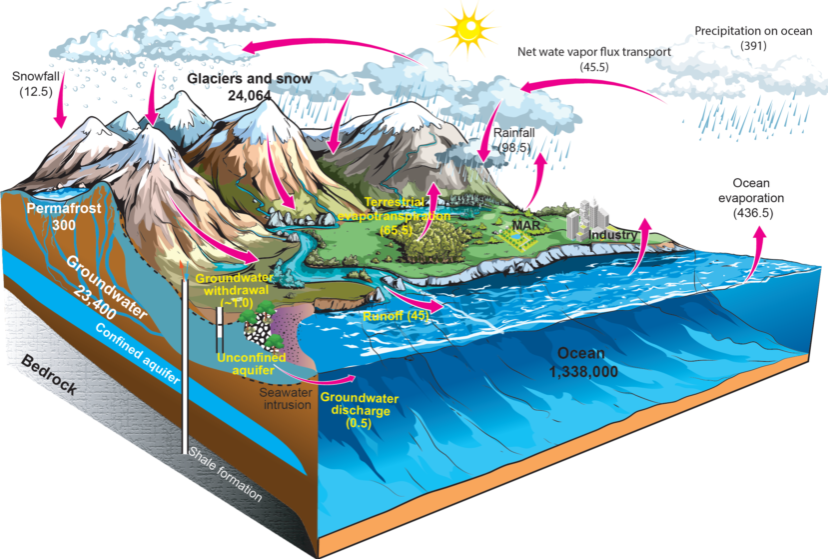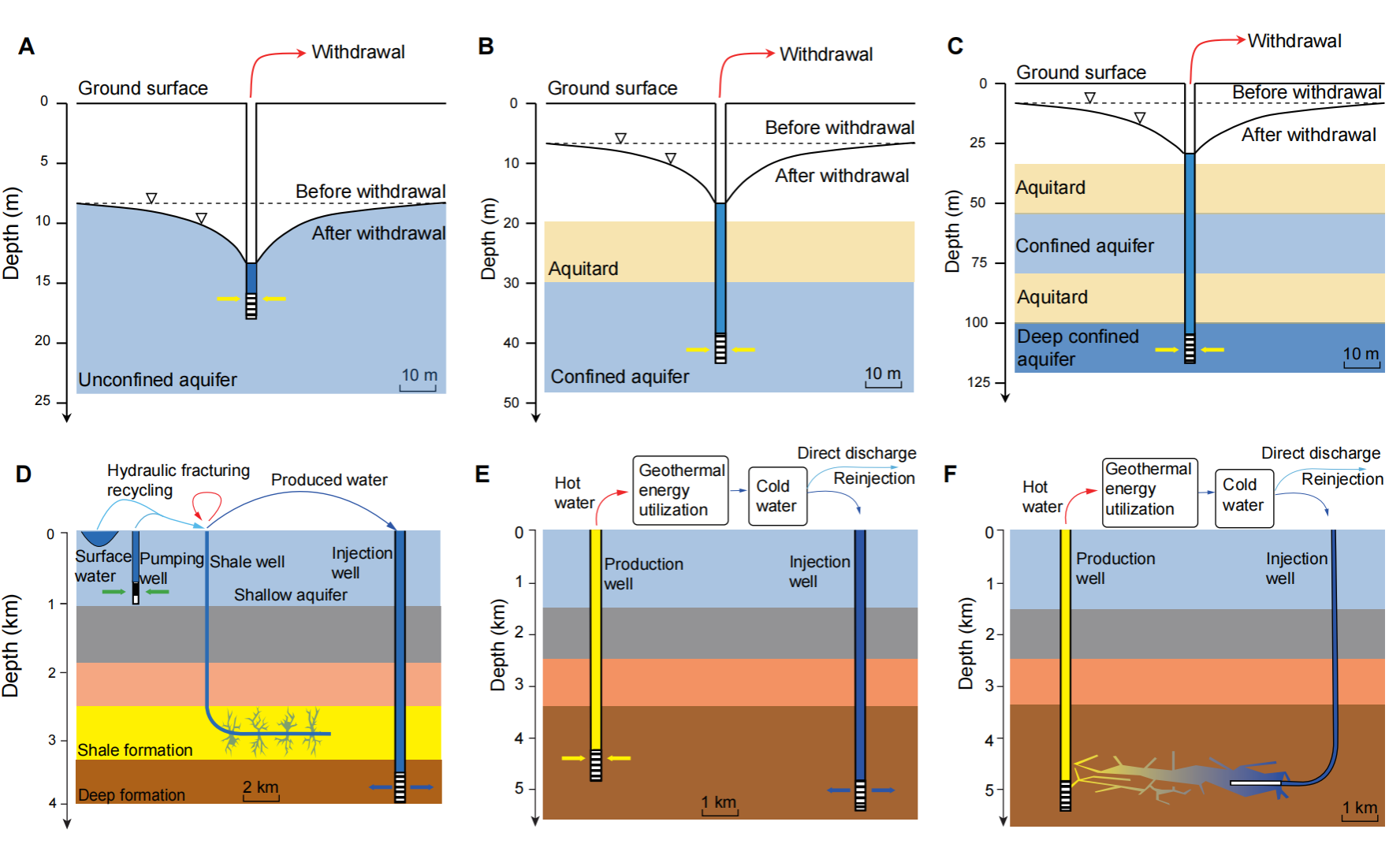Contributed by: Party Committee Propaganda Department | Edited by: Liu Ye | Preliminary Review: Liang Lili | Final Review: Qi Meng | Date: March 1, 2024
On March 1, Prof. Liu Junguo published two academic papers inScienceas the corresponding author. Science, focusing on reporting the major original achievements worldwide, is one of the world's most influential and authoritative scientific journals. The titles of the two papers areAnthropogenic climate change has influenced global river flow seasonalityandThe changing nature of groundwater in the global water cycle. This is the first time our university has published high-level academic papers in science since its establishment. This breakthrough powerfully demonstrates our international academic influence and plays a significant supporting role in building a scientific research center, improving the scientific and technological innovation capacity, and accelerating the "double first-class" construction in hydraulic engineering disciplines. The second paper is summarized as follows:
Prof. Liu Junguo, President of North China University of Water Resources and Electric Power, Associate Professor Kuang Xingxing and Chair Professor Zheng Chunmiao from the Southern University of Science and Technology, and their team, co-authored and published a review paper titledThe changing nature of groundwater in the global water cycleinScience. The paper overviews the dynamic changes of groundwater in the global water cycle over recent decades due to climate change and other anthropogenic activities, reviews the impacts of these factors on groundwater recharge, discharge, flow, storage, and distribution, assesses the contribution of groundwater changes to sea level rise and the increased risk of groundwater inundation in coastal areas, and predicts the future challenges and strategies for sustainable utilization of global groundwater resources.

Figure 1 in the paper illustrates the global water cycle and its components. It marks the storage (×1,000 km³) of different water bodies worldwide and the flux (×1,000 km³/yr, in brackets) of global water cycle components. Upward arrows indicate evaporation from the oceans and transpiration from the land. The land water balance does not consider Antarctica.
Groundwater is the largest available freshwater resource and forms an active component of the global water cycle, maintaining the sustainable development of rivers, lakes, wetlands, crops, forests, and other ecosystems. As the primary source of fresh water, groundwater provides drinking water to billions of people and supplies over 40% of global irrigation demand. Climate change and other anthropogenic activities are altering the global water cycle at an unprecedented rate. Groundwater, as a crucial component of this cycle, is becoming increasingly active and complex in its role. Fully understanding and analyzing the changes in groundwater and the factors influencing these changes are essential for maintaining sustainable underground freshwater resources for both humans and ecosystems.
The paper, based on an extensive review of literature, discusses the changes in groundwater in the global water cycle caused by climate change, focusing on three main aspects: (1) Current global average groundwater recharge is at least 12,000 to 17,000 km³/yr. Due to climate warming, groundwater recharge shows increasing or decreasing trends in different regions worldwide. The uncertainty in groundwater recharge forecasts mainly arises from the uncertainty in future rainfall intensity and the generalization of hydrological processes and groundwater settings in global hydrological models; (2) Global estimates suggest that by 2100, glaciers will reduce by approximately 20% to 50% compared to 2015. Ongoing climate warming will further reduce the contribution of glacial meltwater to rivers, leading to a shift of some river recharge sources towards meltwater and groundwater. Large amounts of groundwater stored in high-altitude cold mountain aquifers, such as rock glaciers, talus cones, moraines, and alpine meadows, play a significant role in maintaining river flow and stabilizing basin flow; (3) There are 14 to 16 million square kilometers of permafrost on the Earth's surface. With continued global warming over the next few decades, permafrost is expected to degrade further, increasing groundwater storage, groundwater cycle depth, and groundwater discharge to rivers.

Figure 2 in the paper illustrates the changes in global groundwater recharge, withdrawal and storage, and water level decline. (A) Spatial distribution of average annual groundwater recharge (1960-2010) simulated by the PCR-GLOBWB model. (B) Average annual net groundwater withdrawal (1980-2016) simulated by the WaterGAP 2.2d model. Negative values indicate an increase in groundwater storage due to surface water irrigation, while positive values represent a decrease in groundwater storage due to groundwater withdrawal. (C) Rate of change in groundwater storage (1980-2016) simulated by the WaterGAP 2.2d model. (D) Decline in groundwater levels in major aquifers worldwide (1990-2014) simulated by the PCR-GLOBWB 2 model.
The paper suggests that anthropogenic activities such as groundwater withdrawal, unconventional oil and gas production, geothermal energy development, groundwater recharge, afforestation, land reclamation, urbanization, and international food trade are reshaping regional groundwater flow fields, making the dynamics of groundwater more complex. Over-withdrawal of groundwater leads to a significant reduction in groundwater storage. Under different climate change scenarios in the future, the demand and withdrawal of groundwater are expected to rise. By 2050, the global groundwater withdrawal is estimated to reach about 1,250±118 km³/year, with a reduction in groundwater storage by about 300±50 km³/year. Groundwater recharge is considered an essential method for responding to climate and land use changes and achieving sustainable water resource management. With the advancement of technology, groundwater recharge is expected to exceed 10% of the global groundwater withdrawal.

Figure 3 in the paper presents a schematic diagram of different types of groundwater withdrawal and recharge. Groundwater withdrawal in (A) unconfined aquifers, (B) confined aquifers, and (C) deep confined aquifers. (D) Horizontal wells and hydraulic fracturing in shale gas extraction. (E-F) Different geothermal systems: (E) Dual-well circulation system; (F) Enhanced geothermal system. (G-H) Groundwater recharge: (G) Aquifer storage and recovery; (H) Infiltration pond. (I) Groundwater level changes before and after afforestation.
The paper further quantifies the contribution of groundwater to sea level rise and discusses the groundwater inundation in coastal areas caused by sea level rise. The paper points out that groundwater withdrawal transfers long-stored underground freshwater into the active surface water cycle, with most of this water eventually returning to the ocean, contributing to sea level rise. By 2100, the global average sea level is expected to rise by 0.5 to 1.4 m. The contribution of reduced groundwater storage to sea level rise is expected to increase in the future and reach about 0.82±0.13 mm/year by 2050, and the cumulative contribution is approximately 10% to 27%. The decrease in groundwater storage and the subsequent sea level rise may lead to seawater intrusion into freshwater aquifers. Additionally, the rise in the groundwater level in unconfined coastal aquifers may lead to groundwater discharge into surface water, causing flooding and inundation in low-lying coastal areas.
In response to the threats posed by climate change and anthropogenic activities to groundwater resources and the growing contradiction between groundwater supply and demand, the paper suggests that groundwater resources should be considered both regionally and globally. Groundwater and surface water should be managed as a unified resource to ensure food and water security and maintain ecosystem health. The inclusion of sustainable groundwater development in laws, regulations, and policies is becoming an international consensus. Various management strategies, such as forest and wetland conservation, seawater desalination, wastewater recycling, groundwater recharge, water diversion projects, and the development of green infrastructure, are being used to enhance the resilience of groundwater and address the increasing global groundwater depletion.
Professor Liu Junguo, President of North China University of Water Resources and Electric Power and Director of the Henan Provincial Key Laboratory of Hydrosphere and Watershed Water Security, and Chair Professor Zheng Chunmiao from SUSTech and Eastern Institute of Technology are the corresponding authors of the paper. Associate Professor Kuang Xingxing from SUSTech is the first author of the paper. Other co-authors include Bridget R. Scanlon, Professor from the University of Texas at Austin (UT Austin), Jiu Jimmy Jiao, Professor from the University of Hong Kong (HKU), Scott Jasechko, Professor from the University of California, Michele Lancia from Eastern Institute of Technology, Boris K. Biskaborn, Professor from Alfred Wegener Institute Helmholtz Centre for Polar and Marine Research, Yoshihide Wada, Professor from King Abdullah University of Science and Technology, Li Hailong, Chair Professor from SUSTech, Zeng Zhenzhong, Associate Professor from SUSTech, Guo Zhilin, Assistant Professor from SUSTech, Zou Yiguang from SUSTech, Yao Yingying, Professor from Xi'an Jiaotong University, Tom Gleeson, Professor from University of Victoria, and Jean-Philippe Nicot, Professor from UT Austin.